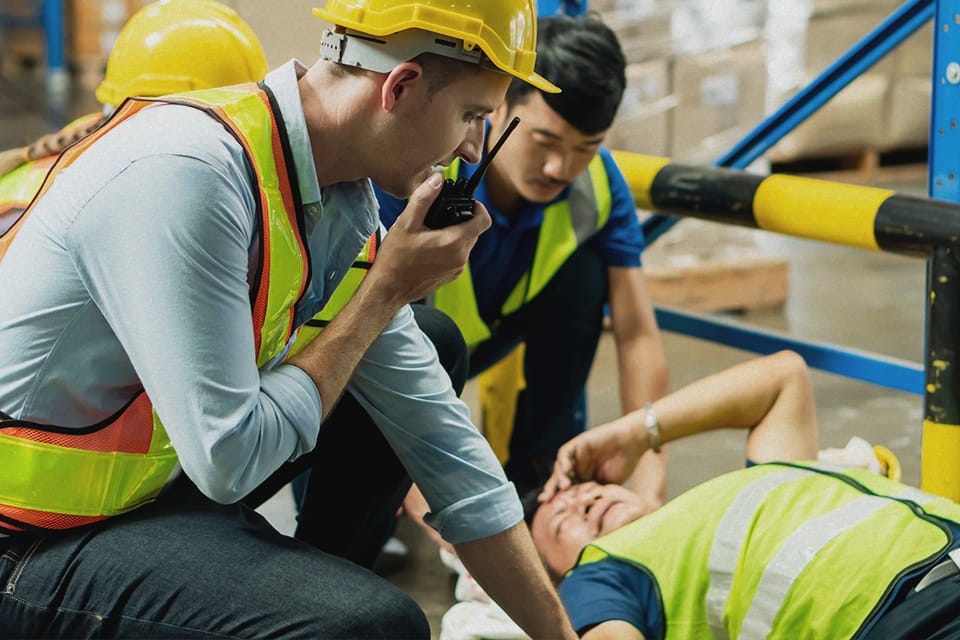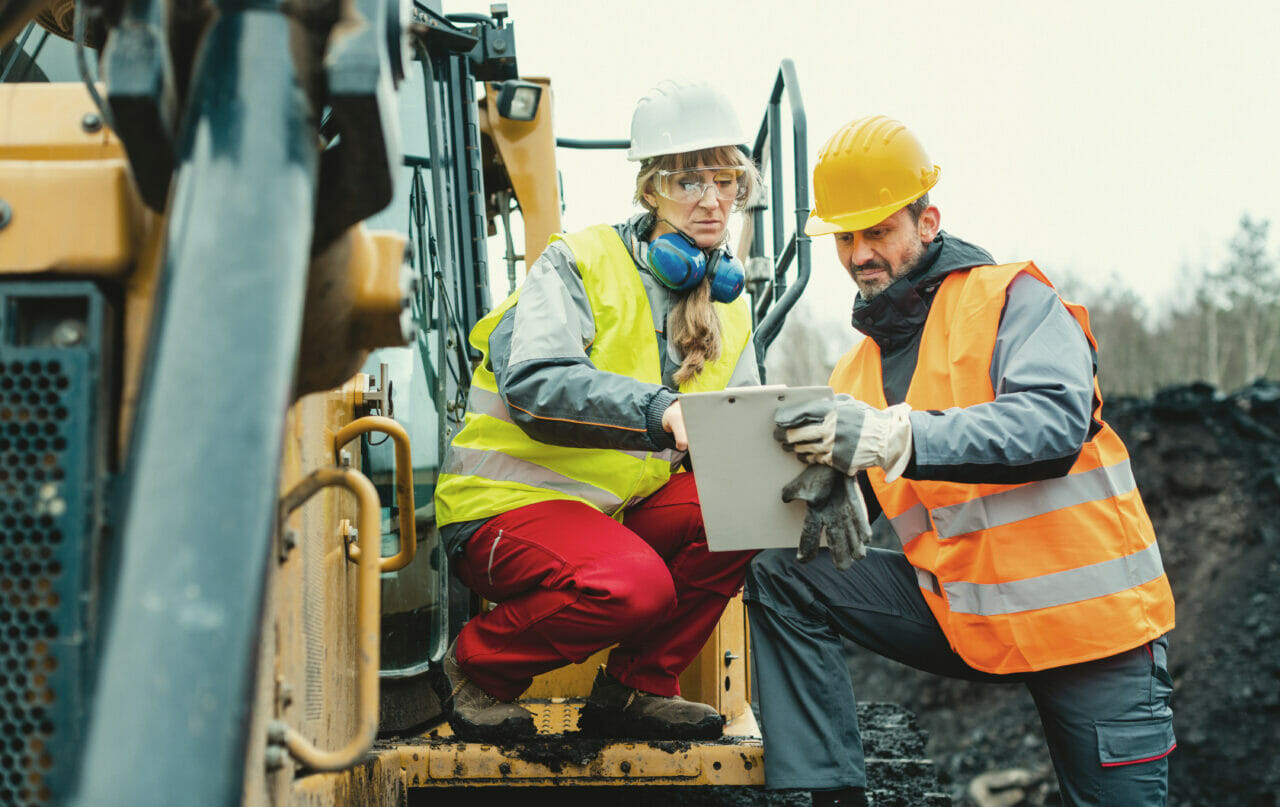
The H2S Training Standard: What Safety Professionals Must Know | Risk Matrix Episode 116
THE RISK MATRIX Cutting-edge podcast on occupational safety and risk management. Hosted by industry titans: JAMES JUNKIN, MS, CSP, MSP,…

An accident scene can unfold without warning—on industrial sites, construction zones, or public roads—with serious consequences for all involved. Properly securing the accident scene ensures safety, supports thorough investigations, and lays the groundwork for legal and operational follow-ups.
This blog explores why securing an accident scene is crucial, outlines key protocols, and offers a real-life case study demonstrating best practices. With attention to detail and adherence to safety standards, organizations can learn from incidents and prevent future ones.
Securing the accident scene provides immediate and long-term benefits for individuals, organizations, and legal authorities. Here’s why it’s so important:
Preserving the scene helps investigators understand what went wrong. Physical evidence, like broken equipment or misplaced materials, can offer clues about the root cause. Securing these items prevents tampering or accidental removal, which could compromise the investigation.
Hazards don’t disappear once the initial event ends. The accident scene may include unstable structures, exposed wiring, or toxic chemicals. Properly securing the area minimizes the risk of secondary injuries to bystanders, responders, or investigators.
Regulators such as OSHA or the DOT often require formal investigations. Detailed documentation from a secured accident scene ensures compliance and protects your organization in case of litigation.
For accidents in public areas, quick scene control prevents panic and confusion. Clear perimeters help emergency responders work efficiently while keeping pedestrians and traffic at a safe distance.
A controlled accident scene can reduce psychological trauma for those involved. Order and structure help witnesses and victims process the situation with less stress.
Documented investigations serve as learning tools. Organizations can turn real-world accidents into training modules that reinforce safety culture and prevent repeat incidents.
Proper accident scene management follows a structured and repeatable process. The following steps should guide every response:
1. Immediate Response and Assessment: First responders must evaluate the accident scene for risks such as fire hazards, leakages of hazardous materials, or falling debris. Assessing the situation from a safe distance allows them to formulate a response plan.
2. Establishing Perimeters: Setting up physical barriers (like cones or tape) to create a secure perimeter helps control access. This is crucial to maintain the scene’s integrity, ensuring that only authorized personnel can enter. Creating zones (hot, warm, and cold) can help differentiate areas of varying risk levels.
3. Documentation: Comprehensive documentation is essential in preserving the accident scene’s context. Capturing photographs, video recordings, and sketches from multiple angles aids in visualizing the event and supports subsequent analysis. Time-stamped records are particularly valuable, detailing every aspect of the environment at the time of the accident.
4. Collecting Evidence: A systematic approach to collecting evidence involves preserving physical items (like tools, machinery parts, or debris) and taking samples (like chemical spills) for lab analysis. Digital data, such as electronic logs or system failures, may also hold critical information about the event.
5. Witness Interviews: Promptly identifying and interviewing witnesses is indispensable. Engaging with individuals who saw the incident can provide critical insights into the circumstances surrounding it. It is essential to gather this information while memories are still fresh.
6. Coordination with Authorities: Engaging local law enforcement or regulatory agencies fosters a collaborative environment for the investigation. Their expertise may be invaluable in managing evidence and adhering to legal requirements throughout the process.
Failing to preserve evidence can result in lost lawsuits, fines, or damage to reputation. Legal concerns should be a priority from the moment the accident scene is secured.
To demonstrate real-world application, here’s a detailed case study involving an industrial accident scene at a manufacturing plant.
During a routine maintenance operation, a hydraulic press suddenly activated, severely injuring a worker. Emergency responders arrived within minutes and began securing the accident scene.
1. Immediate Response: The safety professional at the plant promptly assessed the situation to identify additional hazards. Power was cut off to the hydraulic press, and first aid was administered to the injured employee until emergency services arrived. Quick actions ensured that further injuries were prevented.
2. Establishing Perimeters: The area surrounding the hydraulic press was cordoned off using safety cones and caution tape. Access was restricted to only those directly involved in the investigation and response, thereby preserving the scene for forensic analysis.
3. Documentation: A safety investigator documented the site meticulously, including photographs of the hydraulic press from multiple angles, video footage of the area, and a detailed sketch indicating the positions of equipment and the injured worker. Every photograph was time-stamped, providing a chronological context for the investigation.
4. Collecting Evidence: Investigators collected maintenance logs detailing the press’s operational status leading up to the incident. Damaged components from the press were preserved for analysis, and electronic control logs were retrieved to examine command sequences that preceded the accident.
5. Witness Interviews: Two colleagues who worked nearby during the incident were interviewed immediately. They provided crucial accounts of the maintenance procedure being conducted, noting potential lapses in communication and equipment checks.
6. Coordination with Authorities: The safety team worked closely with OSHA representatives who arrived at the scene shortly after the incident. Their involvement highlighted the importance of compliance with safety regulations, and they provided directions on preserving evidence related to the investigation.
The investigation revealed that a software malfunction in the hydraulic press’ operational controls had inadvertently activated the machinery during maintenance. As a result, the company implemented enhanced software checks, instituted more robust training for maintenance personnel, and revised safety protocols to mandate that machinery be fully powered down and inspected before maintenance work.
The case study provided several takeaways applicable to any organization:
Securing the accident scene is not just a protocol. It’s a moral and legal obligation. It protects people, preserves truth, and prevents future harm. When an accident happens, your team must respond with clarity, confidence, and care.
Following a structured response, from setting up barriers to collaborating with experts, ensures safety and compliance. Legal preparedness, thorough documentation, and strong communication are key.
By treating every accident scene as a learning opportunity, organizations foster a safer, more resilient workplace. With the right procedures, tools, and mindset, even traumatic events can lead to progress.
James A. Junkin, MS, CSP, MSP, SMS, ASP, CSHO is the chief executive officer of Mariner-Gulf Consulting & Services, LLC and the chair of the Veriforce Strategic Advisory Board and the past chair of Professional Safety journal’s editorial review board. James is a member of the Advisory Board for the National Association of Safety Professionals (NASP). He is Columbia Southern University’s 2022 Safety Professional of the Year (Runner Up), a 2023 recipient of the National Association of Environmental Management’s (NAEM) 30 over 30 Award for excellence in the practice of occupational safety and health and sustainability, and the American Society of Safety Professionals (ASSP) 2024 Safety Professional of the Year for Training and Communications, and the recipient of the ASSP 2023-2024 Charles V. Culberson award. He is a much sought after master trainer, keynote speaker, podcaster of The Risk Matrix, and author of numerous articles concerning occupational safety and health.
References
Occupational Safety and Health Administration (OSHA). (2023). Best Practices for Workplace Accident Investigations. https://www.osha.gov
National Fire Protection Association (NFPA). (2023). NFPA 1500: Standard on Fire Department Occupational Safety and Health Program. https://www.nfpa.org
Reason, J. (2000). Human Error. Cambridge University Press.
Heinrich, H.W. (1931). Industrial Accident Prevention: A Scientific Approach. New York: McGraw-Hill.
Vincoli, J.W. (2018). Occupational Safety and Health Compliance: The Ultimate Guide to OSHA Compliance. Wiley.
U.S. Chemical Safety and Hazard Investigation Board (CSB). (2022). Case Studies in Chemical Incidents: Lessons Learned for Future Safety Practices


THE RISK MATRIX Cutting-edge podcast on occupational safety and risk management. Hosted by industry titans: JAMES JUNKIN, MS, CSP, MSP,…

THE RISK MATRIX Cutting-edge podcast on occupational safety and risk management. Hosted by industry titans: JAMES JUNKIN, MS, CSP, MSP,…
We’ll send you practical and insightful supply chain risk management info that can benefit your business. Plus, important company updates that keep you in the loop.
